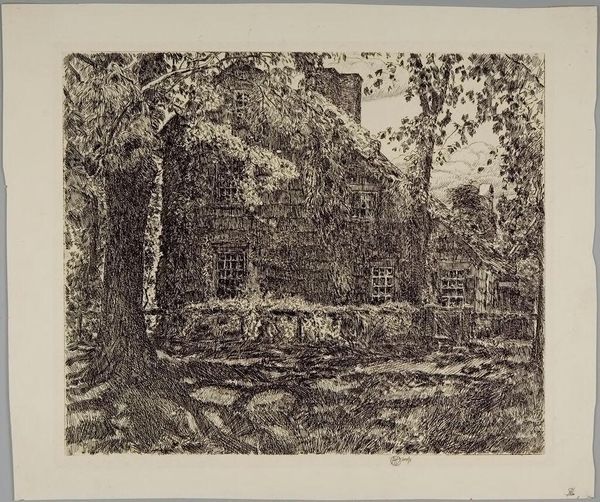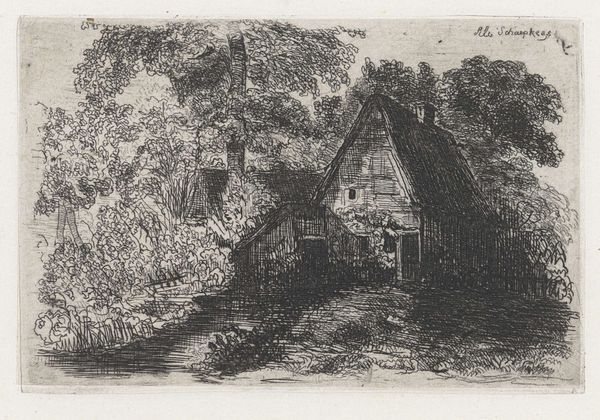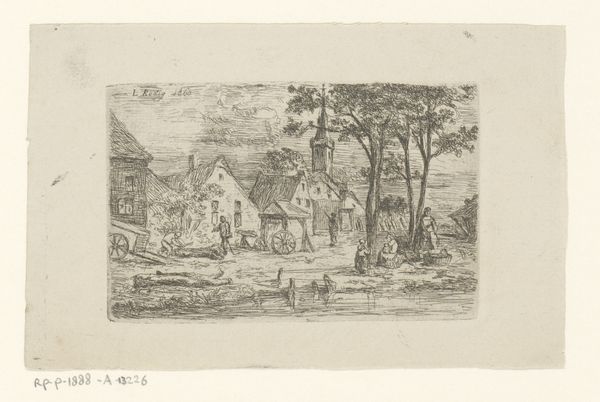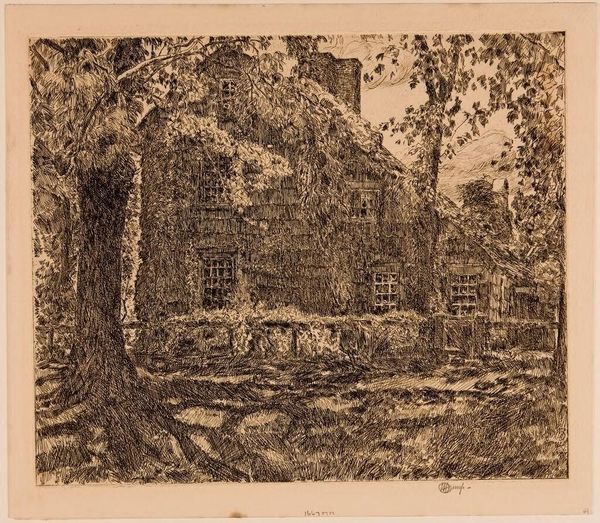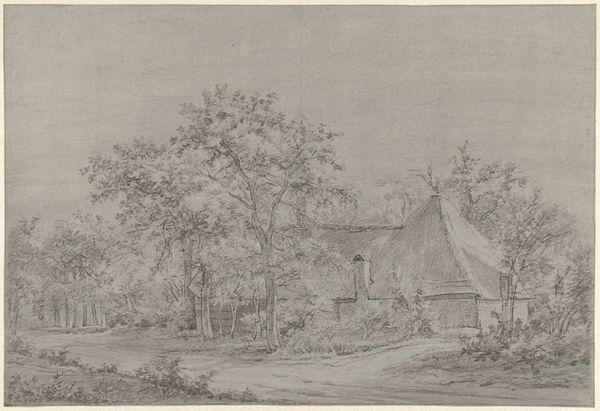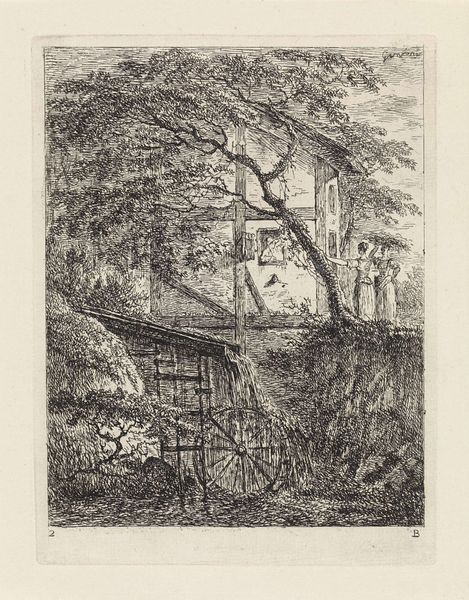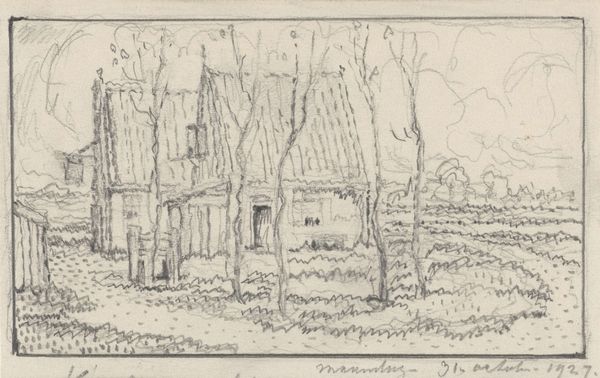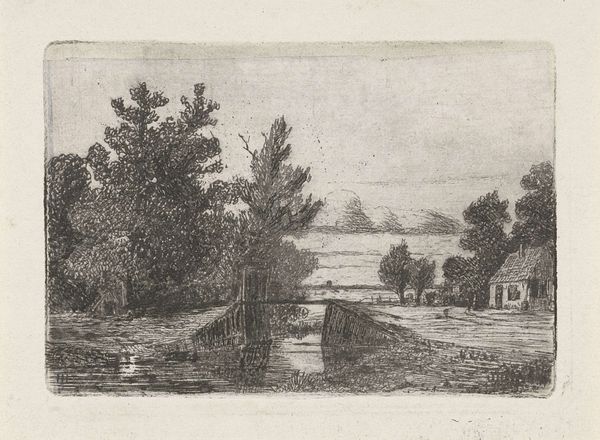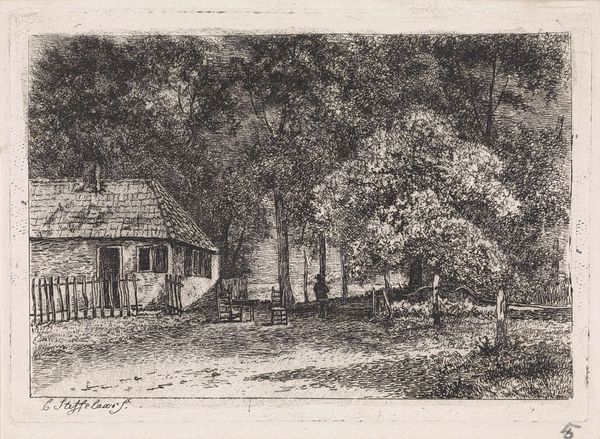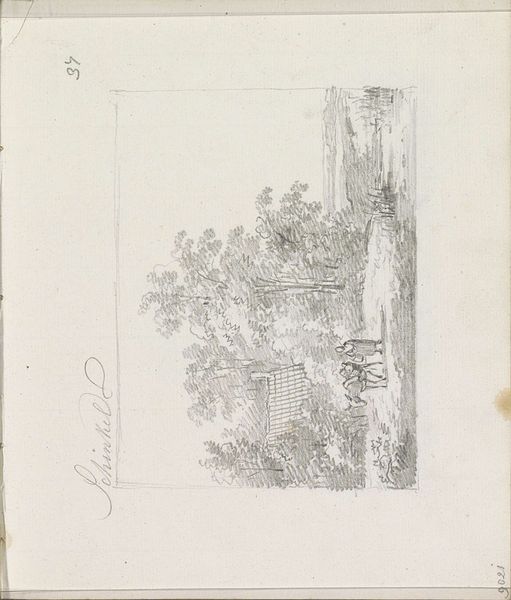
print, etching
#
dutch-golden-age
# print
#
etching
#
landscape
#
cityscape
#
realism
Dimensions: height 94 mm, width 162 mm
Copyright: Rijks Museum: Open Domain
Hercules Segers created this print of the Ruins of the Abbey of Rijnsburg in the early 17th century, using etching and possibly other techniques like aquatint to build up tone. Segers’s prints are unlike anything else made at the time. He was deeply experimental, using unorthodox materials and processes to achieve unique effects. He often printed on colored grounds, and reworked his plates extensively, resulting in impressions that vary widely in appearance. The monochrome palette and textured surface emphasize the ruinous state of the abbey, hinting at themes of decay, impermanence, and the passage of time. The level of detailed labor involved in creating such a unique print, one that would have required the artist to develop his own materials and processes, challenges conventional distinctions between craft and fine art. Segers elevates printmaking to a highly individualized art form. By focusing on Segers's innovative approach to materials and process, we gain a deeper appreciation for the artistry and complexity of his work.
Comments
rijksmuseum about 2 years ago
⋮
The loosely woven linen has absorbed the priming layer. The ink did not properly adhere to this ground, whereby the impression is incomplete.
Join the conversation
Join millions of artists and users on Artera today and experience the ultimate creative platform.

